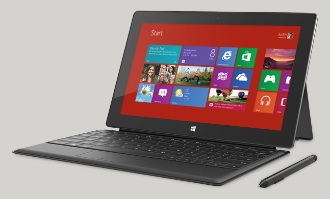 Microsoft’s Surface tablets failed to gain much traction in both the consumer and enterprise space, but now Redmond hopes to change a thing or two with the second generation, especially when it comes to businesses.
Microsoft’s Surface tablets failed to gain much traction in both the consumer and enterprise space, but now Redmond hopes to change a thing or two with the second generation, especially when it comes to businesses.
The original Surface RT filed to impress business users, while the Surface Pro which was supposed to do exactly that didn’t do much better, either. The new generation has vastly superior hardware, but that’s not enough in the consumer space. Windows RT is practically on life support and the Surface 2 is the only product based on Redmond’s tablet OS. The Surface Pro 2 is a bit better, with a snappy Haswell chip, backed by up to 8GB of RAM and 512GB of solid-state storage, it is pretty much the best Windows 8.1 tablet money can buy – and you will need quite a bit of money, since it doesn’t come cheap.
So what will be different this time around? Surface Commercial director Cyril Belikoff told CITEworld.com that the RT-based Surface 2 is actually getting more and more love from big corporate customers. Most companies have not deployed tablets on a large scale yet, hence they are willing to take a look at Microsoft’s offer. Those that already use iOS or Android tablets probably won’t make this leap of faith.
As for the Surface Pro 2, Microsoft is now marketing it as a laptop replacement. However, Microsoft is not offering any incentives to partners to sell Surface Pros rather than other Windows 8 laptops or tablets. Belikoff reckons business will realise the advantage of replacing some laptops and boxes with Surface tablets, as it combines the advantages of a proper PC with the portability of a tablet.
Asked why Microsoft didn’t make more of a push towards corporate with the first generation, Belikoff didn’t exactly have an answer. He merely said the first Surface RT was designed as a “personal device” and that it is getting business friendly only with RT 8.1.
That seems to be the whole point. The original Surface RT wasn’t designed with businesses in mind, but at the same time it flopped in the consumer market, prompting other vendors to drop Windows RT altogether. So what exactly was it designed for in the first place?





